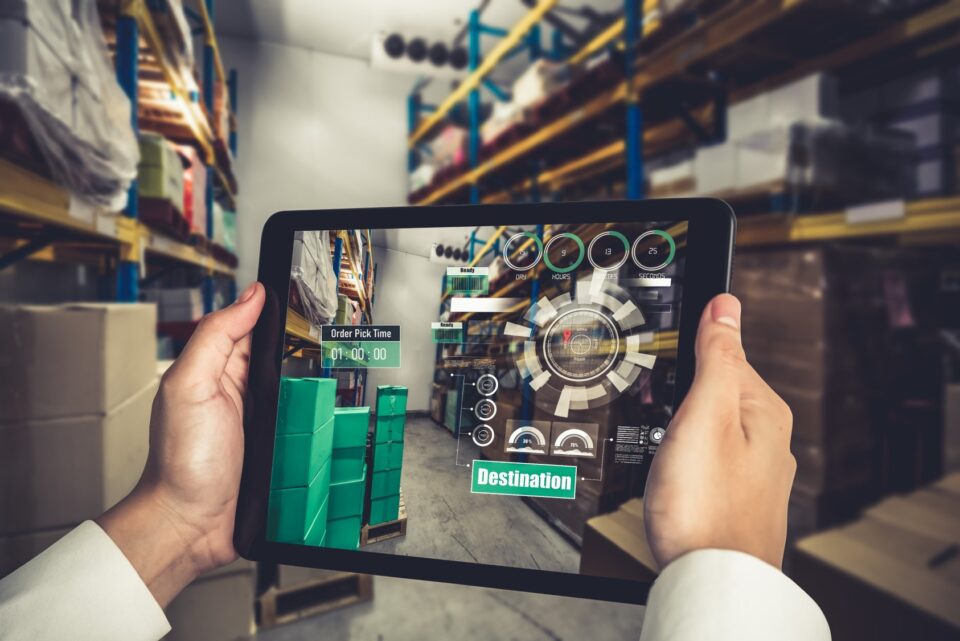
How Vendor Managed Inventory (VMI) Strengthens Supply Chain Resilience and Collaboration
To optimize inventory management, retailers and suppliers are increasingly turning to Vendor Managed Inventory (VMI) tools that transfer the responsibility…
Generix Ushers in a New Era of Intelligent Commerce for Retailers with AI-Driven Innovation Read the press release

It is the most widely used method of identification in the world. This system uses a language that creates unique codes and identifies goods through a series of numbers and bars. This code is read by the contact of a reader (handheld, pen reader, laser reader).
This method is used to store and retrieve data remotely using markers called “radio tags”. The RFID tag is capable of transmitting data using radio frequency waves and usually lights up when in close proximity to a reader. This method significantly improves the speed and accuracy of records. Among its advantages: a longer lifespan, a greater capacity of information storage and a remote reading.
The arrival of new generations of imagers and cameras has made logistics chains more fluid, especially with the addition of video analysis. This new equipment, which has a vast visual coverage area, can read several barcodes at the same time and from different angles, and even essential information (logos indicating flammable or dangerous products). It is thus possible to easily trace the passage of a product from one stage to another.
This positioning system works by satellite. A GPS receiver or beacon receives signals from several satellites, then compares the time differences upon arrival to determine its location. This method is well suited to outdoor environments. It is well suited for off-site tracking, such as a fleet of vehicles, or in locations where it is difficult to install infrastructure.
These virtualization technologies allow a large number of layers of digital information to be superimposed on top of each other, such as graphics, GPS coordinates, textual data or videos. This allows operators to observe a product and collect all the information from databases. These systems can be used on several media: smartphone, tablet, headset, glasses.
For example, augmented reality enables real-time visualization of the warehouse’s storage capacity and optimization of available space based on inventories taken. 2D and 3D technologies can be used to create a virtual warehouse plan to determine the most strategic locations for saving space and reducing costs.
WMS solutions dedicated to warehouse management and tracking and TMS solutions dedicated to transport are essential tools if you are aiming for 360° traceability. In fact, in addition to offering their own functionalities, they offer unparalleled compatibility and allow you to agglomerate the vast majority of technologies.
Dedicated features
The WMS offers a vision of all the operations of your warehouses in real time. The TMS, on the other hand, offers the possibility of tracking operations from the time the goods leave the factory until they are delivered to your customers. Each event is integrated into the system and is verified. If a risk that the On Time In Full is not respected is identified, an alert is triggered, allowing you to react quickly. In addition, if a dispute or breakage occurs, you are able to isolate the incident, backwards. Whatever the situation, you always have the ability to inform your customers in real time of the status of the delivery.
The other advantage of these solutions is that your suppliers are constantly working on their evolution: as an illustration, Generix Group will release a new smartphone application in summer 2022 that will enrich its TMS offer. This will enable you to meet your tracking challenges even more precisely by tracking your drivers’ routes and directly inviting them to update specific data, such as the customer’s delivery address if it is out of date.
Compatibility with leading-edge technologies
In addition to their own functionalities, collaborative warehouse and transport management and monitoring solutions can combine both classic and more complex technologies. For example, the cameras described above can be coupled with WMSs: the device can then automatically establish the status of stocks, the weight of a load or potential dangers… all from a simple image analysis. Some cameras can even determine the exact measurements of a parcel, allowing the software to seek the best possible space optimization.
These solutions can go much further: the portals of Generix Group’s Supply Chain Visibility offer, designed among other things for WMS and TMS users, are enriched with tracking data from partner technologies, such as those of Shippeo, whose 800-parameter algorithm provides a view of all the factors that can impact the arrival date (regulations, weather, dwell time, traffic, drivers’ breaks). Note that the ETA estimate is 85% accurate when you are 24 hours away from the delivery, and 90% accurate when you are 12 hours away from the estimated delivery.

To optimize inventory management, retailers and suppliers are increasingly turning to Vendor Managed Inventory (VMI) tools that transfer the responsibility…

In an ever-evolving logistics environment, agile and precise warehouse resource management is essential to remain competitive. With increasing volumes driven…

France’s electronic invoicing reform relies on a Y-architecture, where Partner Dematerialization Providers (PDPs) play a central role in issuing and…

Work with our team to build your ideal supply chain software stack and tailor it to your unique business needs.